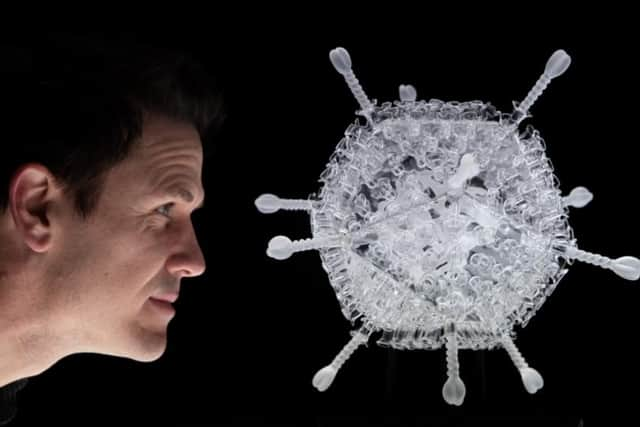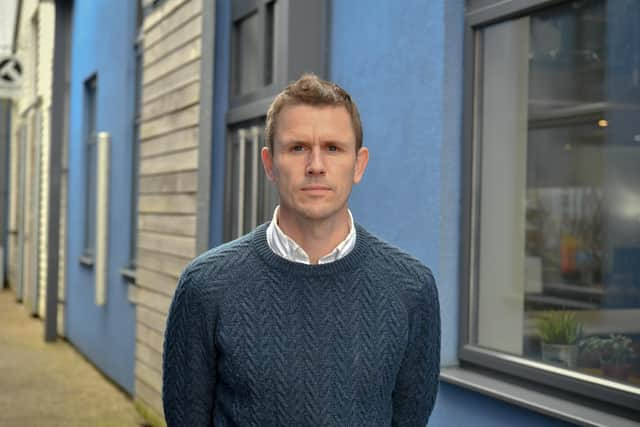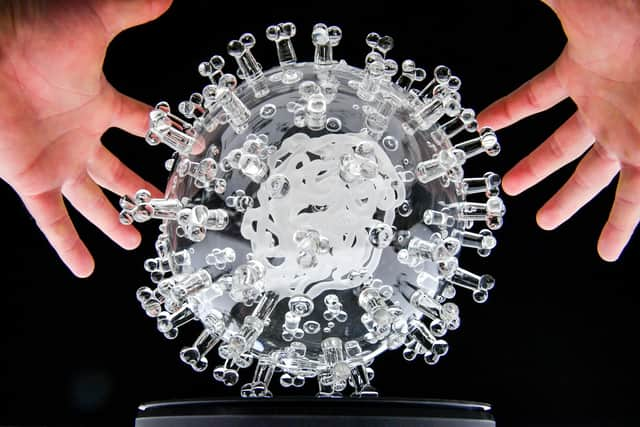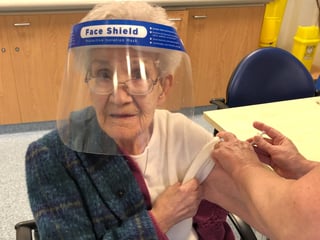Artwork hailing 10 million mark in UK's vaccine campaign created with help of Sunderland's National Glass Centre
and live on Freeview channel 276
Luke Jerram created the artwork, which measures 34cm across and is one million times larger than the actual nanoparticle, as he spent a month working at Sunderland’s National Glass Centre.
The piece is created from borosilicate glass and made from the same materials and techniques used in medical scientific glassware for test tubes and distilleries.
Advertisement
Hide AdAdvertisement
Hide AdFive limited editions of the artwork are being made, with all profits from their sale going to the charity Medecins Sans Frontieres to help communities heavily affected by the pandemic.


Mr Jerram previously created a glass sculpture of Covid-19 in March.
He tested positive for the virus in November and is still feeling its effects.
“When I created a sculpture of Covid-19 back in March, little did I know I’d later be among those to contract the virus,” Mr Jerram said.


Advertisement
Hide AdAdvertisement
Hide Ad“It’s an awful disease and two months on, my sense of smell is shot, I have tinnitus and still feel tired at times.
“During my recovery, it became clear to me that my next artwork should focus on the vaccine, our way out of this global crisis, as a tribute to the scientists and medical teams who have been working collaboratively across the world to fight the virus.
“It’s brilliant that such effective vaccines have been created in such a short space of time and that here in the UK we’ve been able to role them out so quickly.


“However, the fight against the disease is a global one, which is why I wanted to support Medecins Sans Frontieres, through the sale of these sculptures.”
Advertisement
Hide AdAdvertisement
Hide AdThe model of the vaccine is the latest in Mr Jerram’s Glass Microbiology series of virus sculptures, and was one of the most complicated to make.
He raised more than £17,500 following the sale of coronavirus sculptures last year.


Photographs of the artwork have been used by academics and journalists around the world for science communication.
The Glass Microbiology sculptures are in museum collections including the Metropolitan Museum in NYC, the Wellcome Collection in London and the Museum of Glass, Shanghai.
Advertisement
Hide AdAdvertisement
Hide AdThey have featured in The Lancet, Scientific American, British Medical Journal (BMJ) and on the front cover of Nature Magazine.
